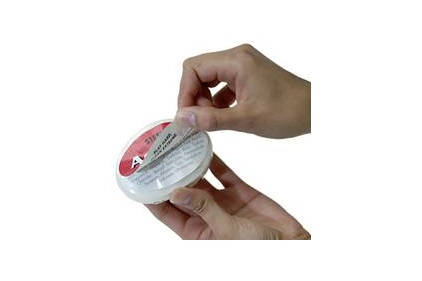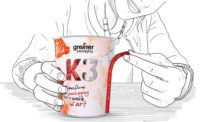What’s space got to do with it?

Peel-and-reseal labels aren’t exactly the new kid on the label-manufacturing block.
But even though the multi-layer label concept has been around a while, its ability to solve the unique challenges of limited label space demands our respect. Need to include a slew of regulations and disclaimers on a small package? No problem. Want to say it in English and Spanish? Check. Are you looking to cross-promote a new complementary product to your current customers? Can do.
With today’s peel-and-reseal technology, label customers don’t need to sacrifice either brand quality or creativity. By consolidating information on a single hinged or removable label, savvy companies have the opportunity to reduce excess packaging and associated shipping costs, keep inventories down, and build their brand at the same time.
Here are three product challenges that beg for an efficient peel-and-reseal label solution.
1. Ever-changing regulatory requirements
Pharmaceutical and nutraceutical manufacturers are especially vulnerable to changing mandates related to information they are required to print on their product packaging.
Regulations issued by the Food and Drug Administration and other industry governing associations requires many product labels in this category to include information like nutritional facts, ingredient lists, usage instructions and cautions/side effects. When combined with type-size requirements, this makes the multi-layer adhesive label a logical solution.
Working with a label manufacturer who can digitally produce peel-and-reseal labels is critical. Why? Because regulations can change frequently and with little notice, and digital printing allows manufacturers to keep inventories low while minimizing losses when regulations change. This, in turn, enables companies to get updated products into the market as soon as possible, reducing turnaround time and revenue losses, and minimizing the risk of non-compliance.
2. Multi-lingual text needs
Think about all the regulatory requirements that can exist for one, single product. Now, consider what happens when you have an extended product line and need to provide product information in multiple languages. That’s sure to make your head spin.
Whether a product is simultaneously marketed in different parts of the world, or in multi-language communities right here in the United States, a peel-and-reseal label or extended content label, such as an expandable fold-out panel, can work well. Languages can appear side-by-side, or the primary language can appear on the outer label face. Experienced label manufacturers will customize a solution that simultaneously meets regulatory mandates and market needs.
3. Building product and brand buzz
Don’t underestimate the power of a label to beef up marketing capacity. Peel-and-reseal labels are an economical and creative way to increase customer response and brand interaction.
Think of the label as already-bought-and-paid-for ad space — simply add your promotional message.
Let’s take the example of a food company or distributor that sells sausage, as well as cheese products. A peel-and-reseal label allows that company to use the second layer of the label to promote the complementary cheese product, and vice versa. Sweepstakes game pieces, direction of use, recipes and instantly redeemable coupons are a few more examples that demonstrate the marketing potential of peel-and-reseal labels.
Some product label decision-makers may think of peel-and-reseal labels as old school. But if you have more content than space, this efficient and flexible workhorse of the label industry is definitely worth a second look.
Looking for a reprint of this article?
From high-res PDFs to custom plaques, order your copy today!






